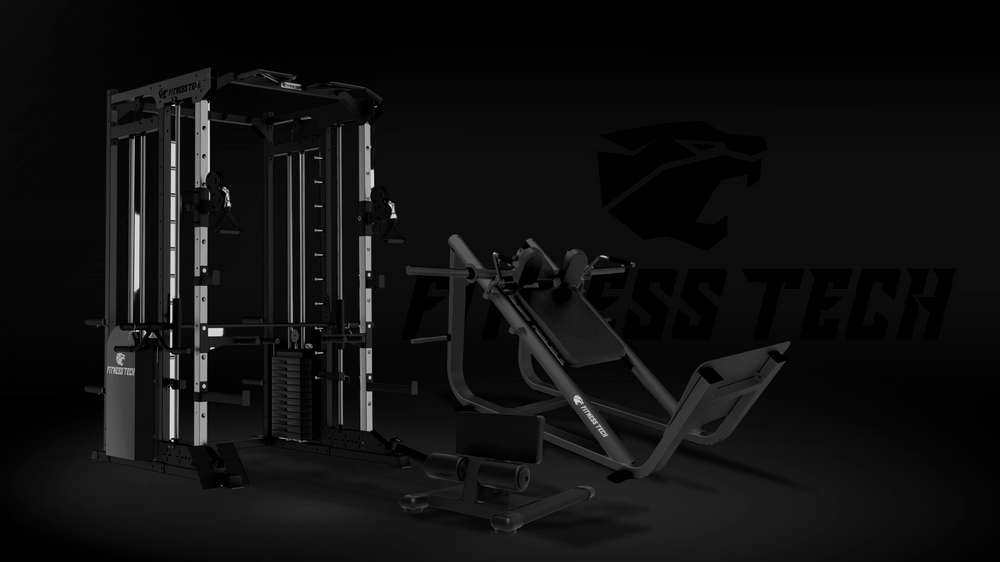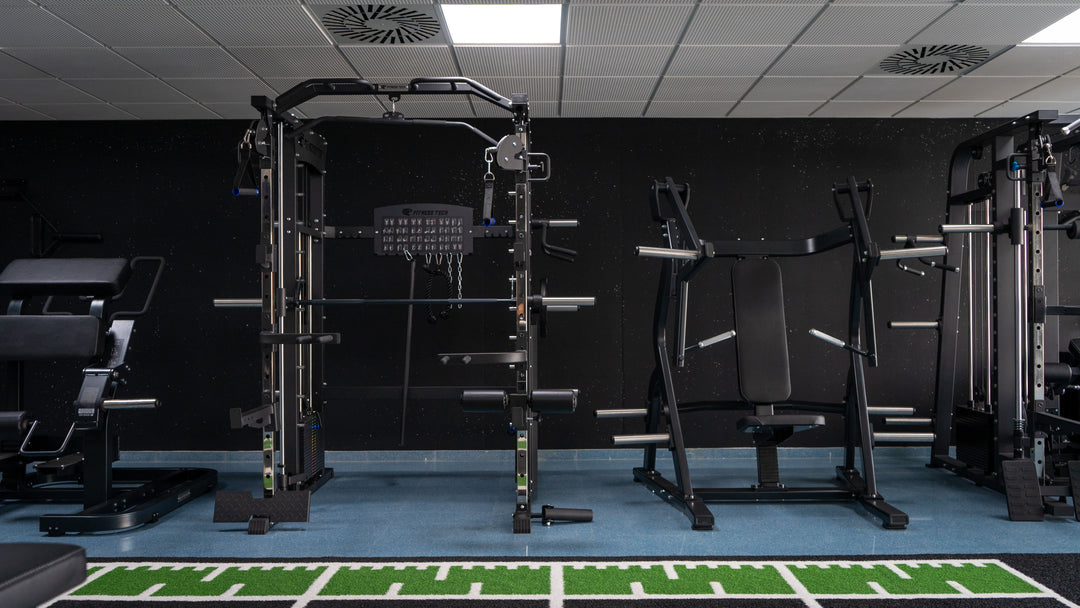What is HIIT? Tips and recommendations to do it well

The term HIIT is one of the most current trends in the world of Fitness. Many specialists in the field of sports have noted the benefits of training with this high-intensity workout. In fact, HIIT stands for High Intensity Interval Training, or in other words: High Intensity Interval Training.
Therefore, it is one of the most used workouts today to get in shape because allows you to burn many calories and a large amount of fat in very little time. If practiced in moderation, it is ideal for those looking to lose weight and speed up metabolism in a short time.
However, HIIT or cardio HIIT is a training that must be done correctly and carefully, especially if you are not yet in good physical shape. In fact, you should keep in mind that, due to its high intensity, it greatly raises the heart rate and increases the risk of injury if not done carefully.
This leads to many people who are starting out in this sport make significant mistakes. That's why, in this article, we are going to explain in detail what HIIT training is and give you a series of tips and recommendations to do it well. So, if you wonder: what is HIIT?, we will explain it to you in great detail and how to train correctly. Therefore, we recommend you pay attention and take notes. Your body will thank you.
What is HIIT training?
As we said, HIIT training means High-Intensity Interval Training. The term itself sheds light on the characteristics of this type of sport practice. In fact, HIIT consists of a series of high-intensity exercise periods, performed at maximum speed and power, interspersed with other periods of low-intensity exercise - active rest - or complete rest.
HIIT training is performed with different activities and is characterized by varying exercises, rest times, and activity periods. However, it is a workout that allows training all muscle groups in a very short period of time, making the exercise highly efficient.
This type of HIIT exercise, thanks to its high intensities, raises the body temperature during training. This allows the body to continue burning fat even while recovering from the effort during rest periods. Additionally, this fat burning continues even days after completing the HIIT exercise.
Therefore, as we mentioned before, HIIT is divided into several intervals, consisting of a effort phase, which can last between 15 and 60 seconds, depending on each individual's fitness level, and another low effort or rest phase, which allows the body to recover, lasting between 30 seconds and 2 minutes. In this way, a specific exercise cycle is repeated four, five, or more times
HIIT training sessions are short in duration, usually lasting between 10 and 20 minutes. Therefore, it is the ideal exercise routine for those who have little time to dedicate to physical activity or want an intense routine that allows them to complement other types of training, such as running, triathlon, or cycling.
What are the benefits of HIIT cardio?
HIIT training has great benefits for cardiovascular and metabolic health. In fact, this type of physical activity is considered a good way to improve health using just a few minutes of your time per day.
Also, iallows burning many calories and fats, so it can help to lose weight quite quickly if combined with a healthy diet and an active lifestyle. So, we are going to show you the benefits of this type of training.
Allows burning a large amount of calories in very little time
As we have said, HIIT training allows burning more calories than traditional exercise methods, since allows achieving the same goals in much less time. Therefore, it is a perfect training for those who want to accelerate calorie burning and have very little time to exercise.
HIIT training speeds up metabolism
Thanks to being a cycle of high-intensity exercises, HIIT allows metabolism to speed up for up to about 72 hours after finishing the training. Because of this, the body continues to burn many calories up to about 3 days after exercise. However, oxygen consumption is exactly the same after 24 hours.
This has very positive effects, since the perception of effort by our body is reduced compared to practicing any other type of more traditional exercises. That is, you can burn a greater amount of calories and fat and speed up metabolism with the feeling of not having spent so much energy.
Speeds up body fat loss
This type of training allows the body to burn a greater amount of fat compared to any other type of more traditional exercises. Therefore, it allows the elimination of unhealthy fats that accumulate in certain parts of the body, such as the abdominal area. For this reason, this type of routine is usually recommended for people who are overweight and want to get in shape.
Very positive cardiovascular effects
If practiced in moderation and with care, HIIT training can help reduce high blood pressure and heart rate in overweight people. Additionally, this type of exercise allows for increased cardiovascular endurance after several weeks of activity. Therefore, in a short time, you can increase the training intensity.
Promotes muscle mass increase
HIIT training is ideal for promoting muscle mass increase thanks to the practice of high-intensity exercises with which you it works practically all muscle groups of the body. Therefore, it is an ideal training to complement with other muscle-building exercises. Likewise, HIIT allows fat burning without losing a significant amount of muscle mass.
It can help combat insulin resistance in diabetic people
According to some studies conducted on this high-intensity sport practice, HIIT training in people with diabetes allows for improved glucose metabolism in muscles within weeks. It has also been shown to improve metabolic and heart health in people with type 2 diabetes. In fact, the results of blood glucose and insulin measurements from studies are generally very positive in this regard.
How to train HIIT correctly?

One of the most common mistakes that beginner athletes usually make in this type of training is the fact that not taking physical abilities into account when starting exercise. Not everyone has the same physical abilities or endurance. That is why those who have low physical condition must be aware of it and adapt the exercise to their current capabilities.
Therefore, it is normal that, at first, the exercises feel suffocating and hard to maintain. In fact, it is common that the first times you practice a HIIT training routine you won't finish it. Therefore, we recommend patience, as your limits today are not the ones you will have next month, since you will have much more endurance as you progress. There are three ways to increase the exercise.
Add more intervals to the routine
As we have mentioned, if you want to know how to train HIIT and progress little by little, we recommend three combinable ways to do it gradually. For example, you can add more intervals. That is, if you do four sets of the exercise cycle at the beginning, over time, you will be able to do five, six, seven, or as many as you can, with their respective active or total rest periods.
Adapt the intervals as your endurance evolves. Likewise, you should also keep in mind that not every day will you have the same energy to perform the exercises. Therefore, if at any time you feel your body can't go any further, we recommend you stop exercising and do not push your limits.
Increase high-intensity work
Another method to gradually increase exercise intensity is to slowly increase the high-intensity work. In this case, without increasing the number of intervals, you can increase the time of the high-intensity period or add difficulties in a HIIT workout. You can, for example, train on incline zones or add a few extra seconds to each of the high-intensity exercises. However, over time, you can combine this and add more intervals to the routine with more seconds of activity in the phase of greatest effort.
Reducing rest time
This is another equally valid option to progress in practicing these HIIT exercises. In this way, after the phase of greatest effort, we can subtract a few seconds from the active rest or rest phase.
But be careful, because it is not advisable to excessively reduce rest time in a HIIT workout. This is because the heart rate speeds up after each high-intensity exercise and the rest periods are used to avoid excessive heart rate.
Likewise, you can also suffer injuries in these cases. Therefore, you must be careful not to reduce the rest time too much. This method can be combined with others as long as you respect your body's current limits.





Leave a comment